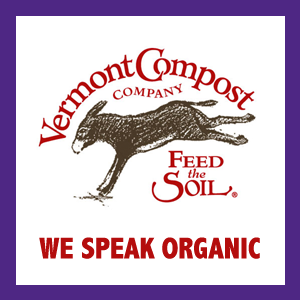I think it’s fair to say that most of the success factors in market farming can be described in a bell curve. As the bell curve implies, most of us have okay access to markets, and we farm ground that’s okay for market farming. We have okay business acumen, okay marketing skills, okay land-access arrangements. Our available labor is largely okay, we have okay innate organizational skills, and okay willpower to get out there and get the right work done on the right day.
Most of our models in farming, however, have something more than okay: they’ve got several factors located far out to the right on the bell curve. They’re located close to concentrations of wealth and enthusiasm for social righteousness and good food. They got into the market at just the right time. They inherited land or bought it on the cheap. They acquired business acumen in another line of work. They discovered what they wanted to do early in life and had a few dominoes tip in just the right way. They’ve inherited or developed the traits that help them stay organized, intuit what needs to be done, and relate well to people.
That’s not to say that our models don’t work hard, develop new skills, enhance value, innovate, and do a thousand other things right day in and day out. If you’re going to succeed in this business – any business! – you’ve got to do a lot more than get lucky. And “getting lucky” is almost always a function of hard work and smarts in addition to having life’s dice roll your way. “Making it” in market farming, especially over the long haul, is never handed to you on a silver platter. (If it is, I haven’t seen an example.)
But it does mean that many of our models in farming can get away with things that those of us without a stack of lucky breaks at our backs can’t. They can get away without a monthly cash-flow budget, or filling out financial statements, or getting a line of credit at the bank. They don’t need to understand financing because they don’t have to incur debt in order to reach their goals. They don’t require a system for employee management because it just comes naturally to them.
The rest of us need to stack the deck – and the best way to stack the deck is to increase the intentionality that we bring to the management of the farm. And that means increasing our use of the plan-monitor-control cycle.
And if there’s one area that drives everything else when it comes to management, it’s money. Because money is the bottom-line expression of value and ability to continue farming in our world. That’s not to say that money has to guide everything you do, but money provides the foundation that allows every other expression of our values to be present in the world. It allows us to farm another year.
And this time of year – right now, as a matter of fact! – is the best time to put together the three key tools you need to monitor your farm’s financial performance: a balance sheet, an accrual-adjusted income statement, and a statement of cash flows. As we move towards the start of the new year, it’s the perfect time to take inventories of our supplies, and set aside an hour on New Year’s Eve to check balances on our bank accounts, accounts receivable and payable, loans, and credit cards.
These three tools, conventional as they are, can provide insights into your farming operation, especially when compiled year after year, when plugged into various farm financial ratios, as described in resources such as this Farm Financial Scorecard. Tracking these year after year can provide not only important measurements of your farm’s performance, they can also help diagnose problems and provide an early warning of negative trends in your business.
(Please see the October and November issues of Growing for Market – available here if you don’t subscribe already – for my articles on assembling financial statements, as well as the book, Fearless Farm Finances, which I coauthored.)
Most of our models in farming, however, have something more than okay: they’ve got several factors located far out to the right on the bell curve. They’re located close to concentrations of wealth and enthusiasm for social righteousness and good food. They got into the market at just the right time. They inherited land or bought it on the cheap. They acquired business acumen in another line of work. They discovered what they wanted to do early in life and had a few dominoes tip in just the right way. They’ve inherited or developed the traits that help them stay organized, intuit what needs to be done, and relate well to people.
That’s not to say that our models don’t work hard, develop new skills, enhance value, innovate, and do a thousand other things right day in and day out. If you’re going to succeed in this business – any business! – you’ve got to do a lot more than get lucky. And “getting lucky” is almost always a function of hard work and smarts in addition to having life’s dice roll your way. “Making it” in market farming, especially over the long haul, is never handed to you on a silver platter. (If it is, I haven’t seen an example.)
But it does mean that many of our models in farming can get away with things that those of us without a stack of lucky breaks at our backs can’t. They can get away without a monthly cash-flow budget, or filling out financial statements, or getting a line of credit at the bank. They don’t need to understand financing because they don’t have to incur debt in order to reach their goals. They don’t require a system for employee management because it just comes naturally to them.
The rest of us need to stack the deck – and the best way to stack the deck is to increase the intentionality that we bring to the management of the farm. And that means increasing our use of the plan-monitor-control cycle.
And if there’s one area that drives everything else when it comes to management, it’s money. Because money is the bottom-line expression of value and ability to continue farming in our world. That’s not to say that money has to guide everything you do, but money provides the foundation that allows every other expression of our values to be present in the world. It allows us to farm another year.
And this time of year – right now, as a matter of fact! – is the best time to put together the three key tools you need to monitor your farm’s financial performance: a balance sheet, an accrual-adjusted income statement, and a statement of cash flows. As we move towards the start of the new year, it’s the perfect time to take inventories of our supplies, and set aside an hour on New Year’s Eve to check balances on our bank accounts, accounts receivable and payable, loans, and credit cards.
These three tools, conventional as they are, can provide insights into your farming operation, especially when compiled year after year, when plugged into various farm financial ratios, as described in resources such as this Farm Financial Scorecard. Tracking these year after year can provide not only important measurements of your farm’s performance, they can also help diagnose problems and provide an early warning of negative trends in your business.
(Please see the October and November issues of Growing for Market – available here if you don’t subscribe already – for my articles on assembling financial statements, as well as the book, Fearless Farm Finances, which I coauthored.)




 RSS Feed
RSS Feed
